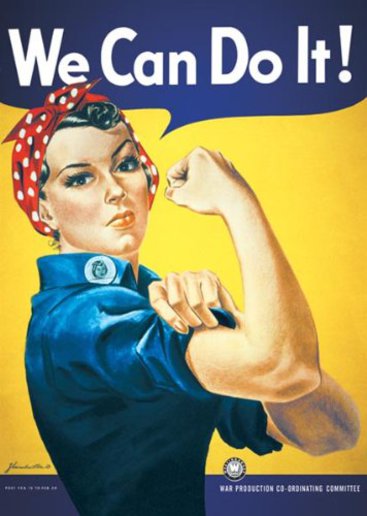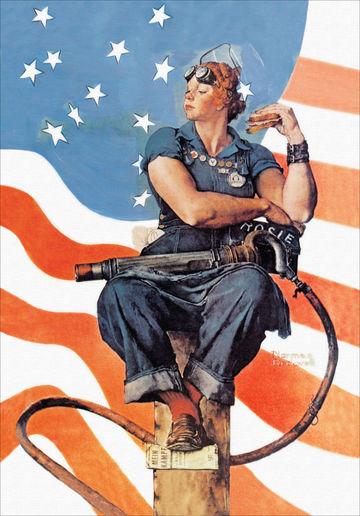grandpa Love
Well-known Member
We all know Rosie worked in the factories during WW 2....... But did she work in tractor factories too?



(quoted from post at 12:58:23 12/01/19)
harvest / threshing crews were around long before WWII, massey harris did not create that idea. So were plowing crews.
(reply to post at 06:26:59 12/01/19) [/q
Can anyone imagine the US ramping up production for a war effort like that today? By the time we got consensus on a mission statement, an environmental impact statement. someone to print up a 500 page safety book on how to plug in a drill, OSHA approval for disposal. congressmen to figure out whose of their pockets would get lined the most, and getting everyone to give up their cell phone long enough to get anything done, we'd have lost the war. :?
(quoted from post at 10:07:47 12/01/19) Don't forget the women who flew fighters and bombers all over the U.S. transporting them where ever they needed to go to free up male pilots for combat. A short but interesting book on this is Fly Girls, author P. O'Connell. Your library can get it.
(quoted from post at 08:03:32 12/02/19) I read several books about the Henry Ford adventures. If you Google map the area, you can still see remnants of the WW II plant including the runway where they tested and shipped them out. He had to create a town to house all the workers....that in itself was a chore...on and on with the problems, but he made it work. Recalling a single building where parts and raw materials came in one end and completed B-24s came out the other. US Govt. hired him because they thought he had the expertise, experience, and assets to make it work....and he did
We sell tractor parts! We have the parts you need to repair your tractor - the right parts. Our low prices and years of research make us your best choice when you need parts. Shop Online Today.
Copyright © 1997-2024 Yesterday's Tractor Co.
All Rights Reserved. Reproduction of any part of this website, including design and content, without written permission is strictly prohibited. Trade Marks and Trade Names contained and used in this Website are those of others, and are used in this Website in a descriptive sense to refer to the products of others. Use of this Web site constitutes acceptance of our User Agreement and Privacy Policy TRADEMARK DISCLAIMER: Tradenames and Trademarks referred to within Yesterday's Tractor Co. products and within the Yesterday's Tractor Co. websites are the property of their respective trademark holders. None of these trademark holders are affiliated with Yesterday's Tractor Co., our products, or our website nor are we sponsored by them. John Deere and its logos are the registered trademarks of the John Deere Corporation. Agco, Agco Allis, White, Massey Ferguson and their logos are the registered trademarks of AGCO Corporation. Case, Case-IH, Farmall, International Harvester, New Holland and their logos are registered trademarks of CNH Global N.V.
Yesterday's Tractors - Antique Tractor Headquarters
Website Accessibility Policy
